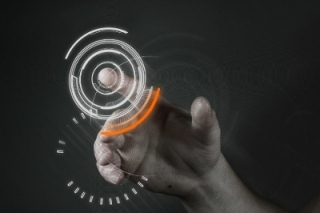Sensor technologies are making their presence felt in a plethora of consumer electronics applications driven by trends towards connectivity among individuals and devices. Sensors enable key capabilities such as improved, intuitive user interfaces and interactivity, accurate athletic performance tracking, and convenient, reliable identity authentication.
 Frost & Sullivan
Frost & Sullivan
Recent analysis from Frost & Sullivan, Impact of Sensory Tracking Technology On Consumer Electronics Sector (https://www.frost.com/d686), finds that sensing technologies are finding uses in a multitude of consumer electronics applications:
- Touch sensors for mobile phones, tablets, digital cameras
- Touchless gesture recognition sensors for gaming, mobile devices, computers, toys
- Motion sensors for mobile devices, game controllers, sports equipment, or to track heading and direction
- Pressure sensors for indoor navigation
- Biometric sensors for mobile devices, laptops, gaming
- Brain computer interface sensors for game control, toys
For complimentary access to more information on this research, please visit: http://bit.ly/1IWbZI7
"3D sensor technologies used for gesture recognition can deliver intuitive, natural human-device interaction," said Technical Insights Principal Analyst Peter Adrian. "Moreover, conductive films, such as silver nanowire films, will quicken the development of flexible, smaller, lighter, intuitive, economical and lower-power touch screens."
The convergence of various technologies will further expand the use of sensors in consumer electronics. Crucial points of convergence include smart textiles, wearables, haptics, the Internet of Things, cloud services, and wireless transmission.
For such technologies to gain more of a foothold and proliferate, sensor manufacturers must address the need for flexibility, robustness, ultra-low power consumption, tiny form factor, and operating capability in different environments and lighting conditions. The deployment of microelectromechanical systems will facilitate the production of smaller, energy-efficient, more networkable sensors for consumer electronics.
"The availability of ubiquitous sensors that can be embedded in a range of devices or applications and readily send data to the Internet will throw open additional opportunities for the technology in consumer electronics," noted Adrian. "As sensor technologies continue to evolve, increased intelligence and communications capabilities will bring novel consumer electronic solutions to the brink of commercialization."
Impact of Sensory Tracking Technology On Consumer Electronics Sector, a part of the Technical Insights (http://ww2.frost.com/research/technology/sensors-control) subscription, identifies and analyses key sensor technologies that will impact consumer electronic applications in the near-, medium-, and longer-term. The study discusses opportunities, challenges, points of convergence, and strategic insights for each technology evaluated following extensive interviews with market participants.
Technical Insights is an international technology analysis business that produces a variety of technical news alerts, newsletters, and research services.